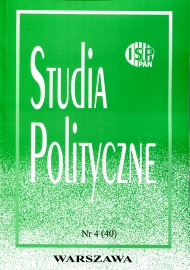Wywiad Ministerstwa Spraw Wewnętrznych PRL jako instrument przełamywania embarga i śledzenia globalnych trendów w mikroelektronice 1971-1990
The Intelligence of the Ministry of Internal Affairs in the Polish People’s Republic as a Tool for Breaking the Embargo and Tracking Global Trends in Microelectronics 1971–1990
Author(s): Mirosław SikoraSubject(s): Politics, Political history, Security and defense, Post-War period (1950 - 1989), Cold-War History
Published by: Instytut Studiów Politycznych PAN
Keywords: technology;intelligence;microelectronics;espionage;Polish People's Republic;Cold War;
Summary/Abstract: As part of the political détente in the international arena in the late ’60s and ’70s, Polish intelligence followed the Soviet pattern and dramatically developed the department responsible for gathering information on science and technology, in terms of personnel and organization. The intensification of activities in this direction led, on the one hand, to the development of a strong relationship between the Polish research and development sector and industry, and on the other hand, to the operational potential of intelligence. The transfer of information technology and microelectronics has been in the foreground of this cooperation since the first half of the ’70s. Every year, the Polish economy was becoming increasingly dependent on activities that were deemed illegal under international commercial and patent law, e.g., smuggling equipment, stealing economic secrets and copying design solutions. However, the situation became particularly dramatic after the US and CoCom tightened restrictions with the economic embargo against the Soviet Union and Poland at the beginning of the ’80s. The list of recipients of the black-market technologies, including those made by leading manufacturers such as DEC, IBM and Honeywell, included both the research, experimental and production centres of the Polish People’s Republic (PRL) that supplied the civilian (commercial) market, and those associated with the army and the Interior Ministry. The PRL’s intelligence analysis activity intensified with the growing rivalry between the US, the EEC and the ASEAN for global hardware and software markets. They began to look closely at the IT policies implemented in various highly developed countries around the world, and to track the global diffusion of computer trends.
Journal: Studia Polityczne
- Issue Year: 2015
- Issue No: 40
- Page Range: 55-98
- Page Count: 44
- Language: Polish

